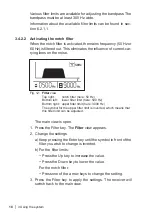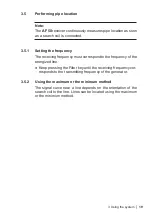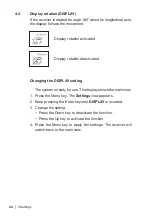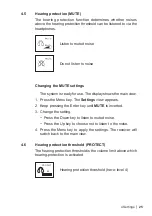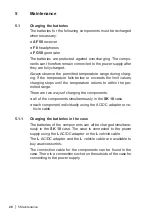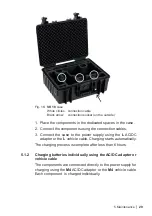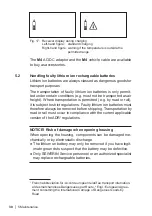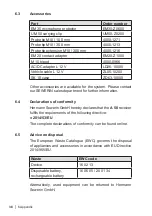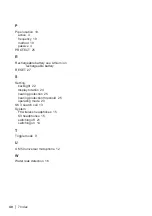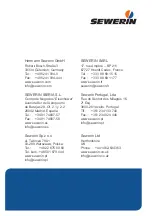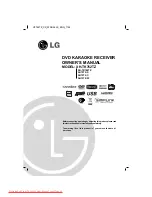
5 Maintenance
│
31
5.2.1
Identifying faulty batteries
A lithium ion battery is considered to be faulty if one of the fol-
lowing criteria applies:
2
●
Housing damaged or badly deformed
●
Liquid leaking from battery
●
Smell of gas from battery
● Rise in temperature with the receiver switched off (more than
hand-hot)
●
Plastic parts melted or deformed
●
Connection leads melted
5.2.2
Removing the battery from the receiver
The battery is located inside the device.
NOTICE! Risk of damage
There are parts in the receiver that may be damaged mechan-
ically or by electrostatic discharge when removing the battery.
●
It is essential to read section 5.2 and section 5.2.1 before re-
moving the battery.
● Avoid electrostatic discharges at all costs, e.g. by using an
ESD workstation.
The receiver must be switched off.
1. Undo the four screws on the bottom section of the housing.
2.
Carefully lift off the bottom section of the housing.
3. Disconnect the electrical supply to the faulty battery by care-
fully removing the white plug on the circuit board.
4.
The battery is fixed in place in the bottom section of the hous
-
ing by means of a retaining plate. Loosen the three screws
on the retaining plate.
5. Remove the battery.
2
According to: EPTA – European Power Tool Association


